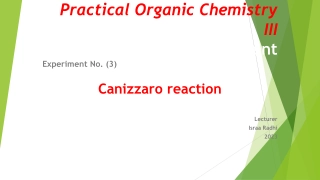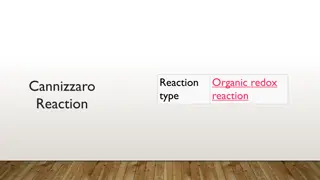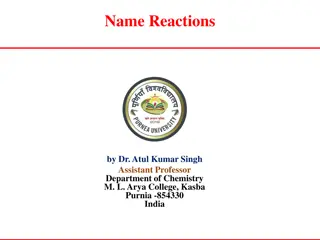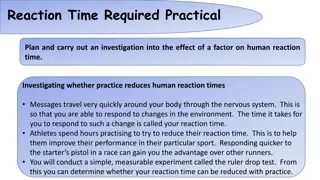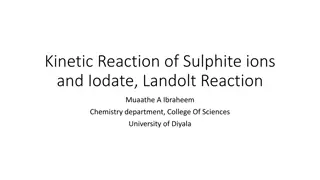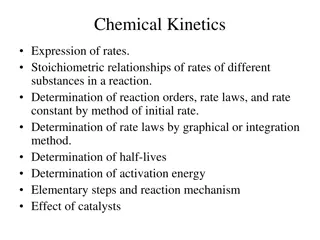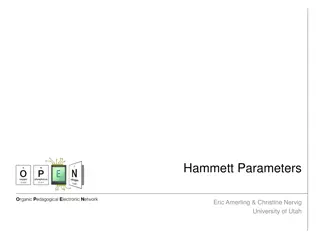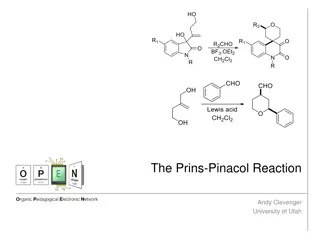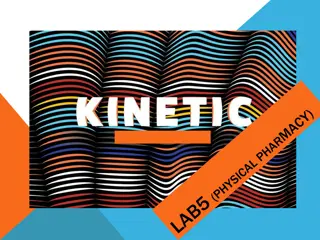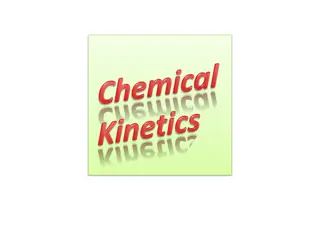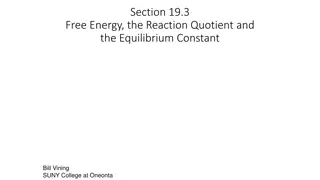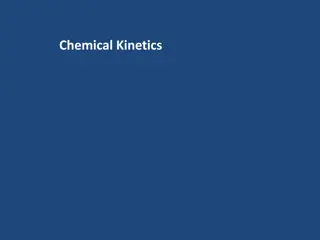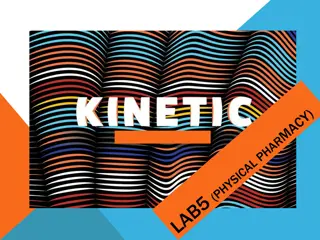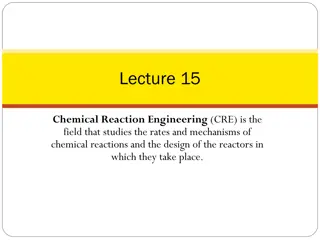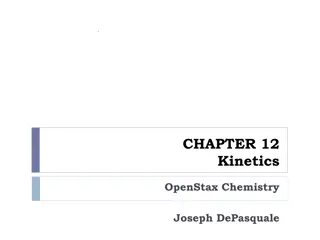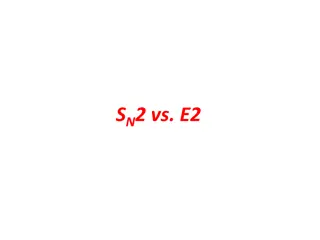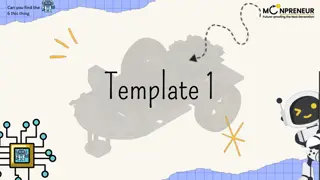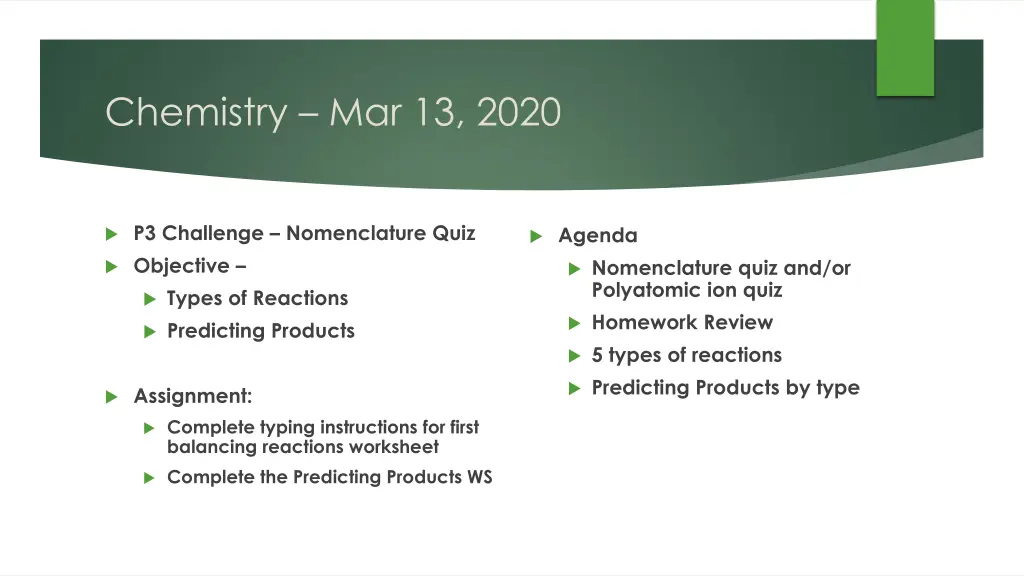
Chemistry Challenge: Types of Reactions and Predicting Products
Explore the fundamentals of nomenclature and reactions, from synthesis to combustion, with a focus on predicting products. Test your knowledge with a quiz and practice activities. Enhance your understanding of balancing reactions and identifying reaction types.
Download Presentation

Please find below an Image/Link to download the presentation.
The content on the website is provided AS IS for your information and personal use only. It may not be sold, licensed, or shared on other websites without obtaining consent from the author. If you encounter any issues during the download, it is possible that the publisher has removed the file from their server.
You are allowed to download the files provided on this website for personal or commercial use, subject to the condition that they are used lawfully. All files are the property of their respective owners.
The content on the website is provided AS IS for your information and personal use only. It may not be sold, licensed, or shared on other websites without obtaining consent from the author.
E N D
Presentation Transcript
Chemistry Mar 13, 2020 P3 Challenge Nomenclature Quiz Objective Types of Reactions Predicting Products Agenda Nomenclature quiz and/or Polyatomic ion quiz Homework Review 5 types of reactions Predicting Products by type Assignment: Complete typing instructions for first balancing reactions worksheet Complete the Predicting Products WS
Types of reactions Synthesis (Combination) A + B AB Decomposition AB A + B Single Replacement A + BC AC + B Double Replacement AB + CD Two elements react to form a compound A compound is separated into its elements One element takes the place of another in a compound. AD + CB Ionic partners switch
Combustion The reaction with oxygen is so common that it is often given its own classification: combustion. The products of a combustion are always the oxides of the elements in the other reactant. If there is a choice of metal ion, you will be told what ion charge to use. Ex: Fe + O2 Fe2O3 Ex: CH4+ O2 CO2+ H2O Ex: Li + O2 Li2O Classify each of the reactions on the next slides.
Type ID practice _____ H2 + _____ O2 _____ Fe + _____ Cl2 _____ Cu + _____ AgNO3 _____ Zn + _____ HCl _____ Pb(NO3)2 + _____ AlCl3 _____ LiClO3 _____ LiCl + _____ O2 _____ Mg(OH)2 + _____ HCl _____ H2O _____ FeCl3 _____ Cu(NO3)2 + _____ Ag _____ ZnCl2 + _____ H2 _____ PbCl2 + _____ Al (NO3)3 _____ MgCl2 + _____ H2O
Predicting Products If given reactants, you should be able to predict the products. The type of reactants will tell you which type of reaction will happen. Reactants Reaction Type Products Two elements Synthesis (S) Compound of the two elements Component elements (or simpler substances) Different element and compound Two different compounds Oxides of each element in other reactant A single compound Decomposition (D) An element and a compound Two compounds Single replacement (SR) Double replacement (DR) Combustion (C) Reaction with oxygen
Predicting Synthesis Use when there are two elemental reactants there will be only one product Determine the ions each element makes. One will be a cation, the other will be an anion. If a variable charge element is involved you will need to be told what ion charge is appropriate for the product. Use the switch drop and reduce procedure to determine the formula of the single product.
Predicting Synthesis - Practice Recall nonmetals and nonmetal oxides react with water to form acids and metals and metal oxides react with water to form bases (hydroxides) Sometimes a simple inventory of the atoms reacting will suggest a product. Balance the reaction. Ex: (II) Ni + Cl2 Ex: N2O5 + H2O
Predicting Decomposition Use when there is only one reactant. Decompositions follow patterns: (These patterns will be on the test) binary compound two elements metal carbonate metal oxide + carbon dioxide metal hydrogen carbonate metal oxide + water + carbon dioxide metal hydroxide metal oxide + water metal chlorate metal chloride + oxygen metal sulfate metal oxide + sulfur dioxide + oxygen metal nitrate metal oxide + nitrogen dioxide + oxygen
Predicting Decomposition -Practice binary compound two elements Name the compound that will decompose to be able to identify how it will decompose. metal carbonate carbon dioxide metal oxide + metal hydrogen carbonate oxide + water + carbon dioxide metal Then follow the pattern to write the products. metal hydroxide water metal oxide + Balance the reaction. metal chlorate oxygen metal chloride + Ex: NaClO3 Ex: CaCO3 metal sulfate dioxide + oxygen metal oxide + sulfur metal nitrate nitrogen dioxide + oxygen metal oxide +
Predicting Single Replacement Use when an element (usually a metal) reacts with a compound. Determine the ion formed by the free element and combine with the anion of the compound to form one product. Turn the cation (or anion) of the compound into a free element as the second product. A metal free element replaces a metal. A nonmetal free element replaces a nonmetal.
Predicting Single Replacement -Practice Check the activity series to verify the reaction happens. Ex: (II) Cu + AgNO3 Ex: Zn + CaCl2
Predicting Double Replacement Use when two compounds are reacting. Identify the cations and anions present in the reactants. Switch partners so that each cation is with the other anion. Write your products using the switch drop and reduce procedure Check solubility to verify the reaction happens. Ex: CaCl2 + AgNO3 Ex: ZnSO4 + Ba(OH)2
Predicting Combustion Use when there is oxygen as a reactant. Identify each element in the other reactant. The products formed will be oxides of each of the elements. Common Nonmetal oxides are CO2, H2O, NO2 and SO2. For metal oxides, use the switch drop and reduce procedure (Metal ion to use given) Ex: C3H3NO + O2 Ex: (III) FeS + O2
Exit Slip - Homework Exit Slip: Balance the following chemical equation: _____Pb(NO3)2 Then identify it s type with a S, D, SR, DR, or C. _____PbO + _____NO2 + _____O2 What s Due? (Pending assignments to complete.) Complete the Balancing Reactions Worksheet with the instructions on the top of pg 2 Predicting Products Worksheet What s Next? (How to prepare for the next day) Read p263-285

